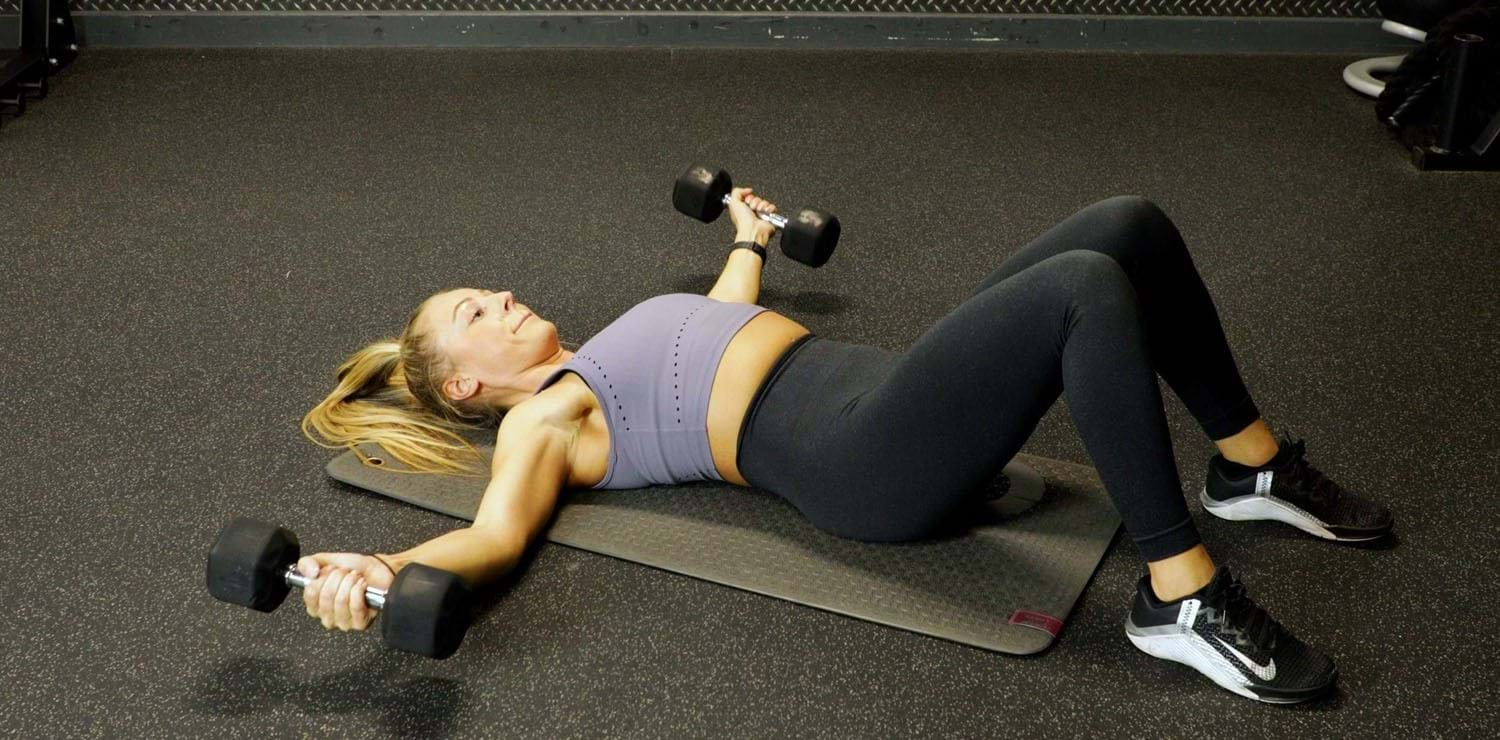Dumbbell Floor Fly
What Is A Dumbbell Floor Fly?

The dumbbell floor fly is a version of the dumbbell chest fly that is performed on the floor, rather than a bench, working the pectorals, deltoids, and triceps.
The floor fly requires the performer to lower the dumbbells in an arc motion until they're in line with the chest. The stretched position at the bottom of the movement is the most challenging, requiring the pecs to contract in a lengthened position to push the dumbbells back to the starting position.
While many popular chest exercises involve a pressing movement, the chest fly uses adduction and abduction to move the arms. This movement challenges the pectorals in a different way and, in addition to building strength and aiding muscle growth, improves chest flexibility and opens the chest muscles. Chest flyes can help to reduce upper back pain and tightness in the upper body.
Check out some other chest fly variations: single arm flyes, machine flyes, cable flyes, seated cable flyes, dumbbell chest flyes
Commonly Asked Questions On Dumbbell Floor Fly
Dumbbell floor flyes are effective at building strength, muscle and mobility in the chest. Compared to chest flyes carried out on a bench, there is a slightly lower range of motion, which can mean less muscle fibres are engaged. However, it’s excellent for beginners becoming familiar with the movement or those returning from injury or prone to shoulder pain.
Floor flyes target the pectorals, anterior deltoids, and triceps, with the chest doing most of the work.
The floor provides greater stabilities and reduces the range of motion, so it is less challenging than the bench or cable variation, however it’s still an effective way to train the pecs using adduction and abduction. The floor fly also reduces the risk of shoulder injury as the weight is unable to be lowered past the body, a common chest fly mistake which stresses the shoulder joint. Due to this, the dumbbell floor fly is likely to be a suitable exercise for beginners or for those prone to shoulder discomfort.
Dumbbell Floor Fly Tips
While the floor fly reduces risk of injury due to a reduced range of motion, using a manageable load and correct form is still important.
To check that you’re using correct form, it can be helpful to think about hugging a tree. This helps to ensure the arms are moving in an arc direction and as such can aid in realizing if the load being used is too heavy. If you’re arms are caving in and you’re getting greater flexion in the elbow, try lower weights.
How To Do Dumbbell Floor Fly
Lie on your back and bend your knees so your feet can be planted on the floor.
Press the dumbbells up so you’re holding them above the chest, palms facing each other. Keep a soft bend in the elbow.
Take a deep breath as you slowly lower the dumbbells in an arc movement until the arms are in line with your body and your elbows are close to touching the floor.
Breathe out and squeeze your chest to push the dumbbells back together.
If you’re not sure if any of the above exercises are suitable for you, please consult your doctor before you start it. Need guidance on how to perform the exercise? Ask a personal trainer at your gym.